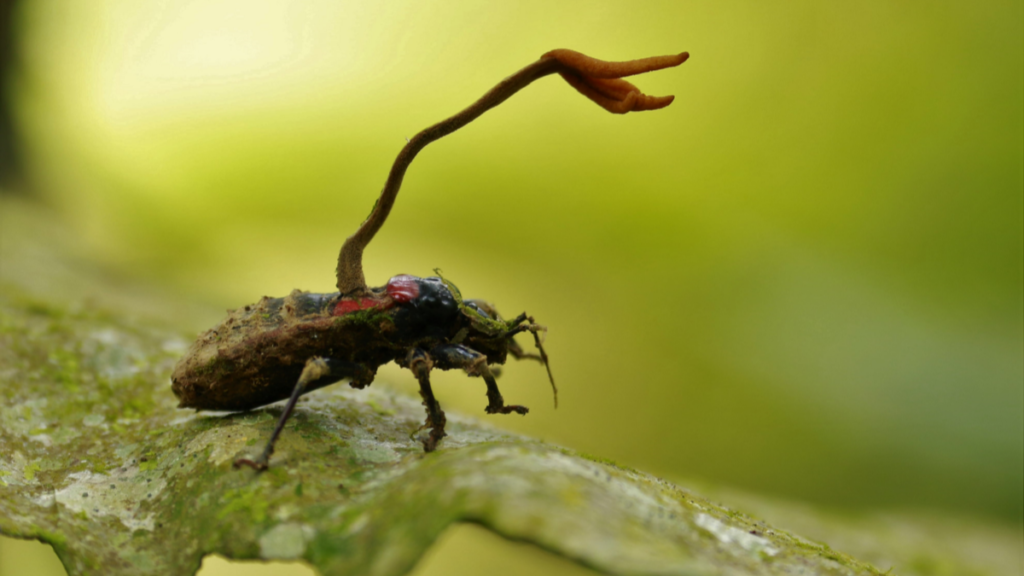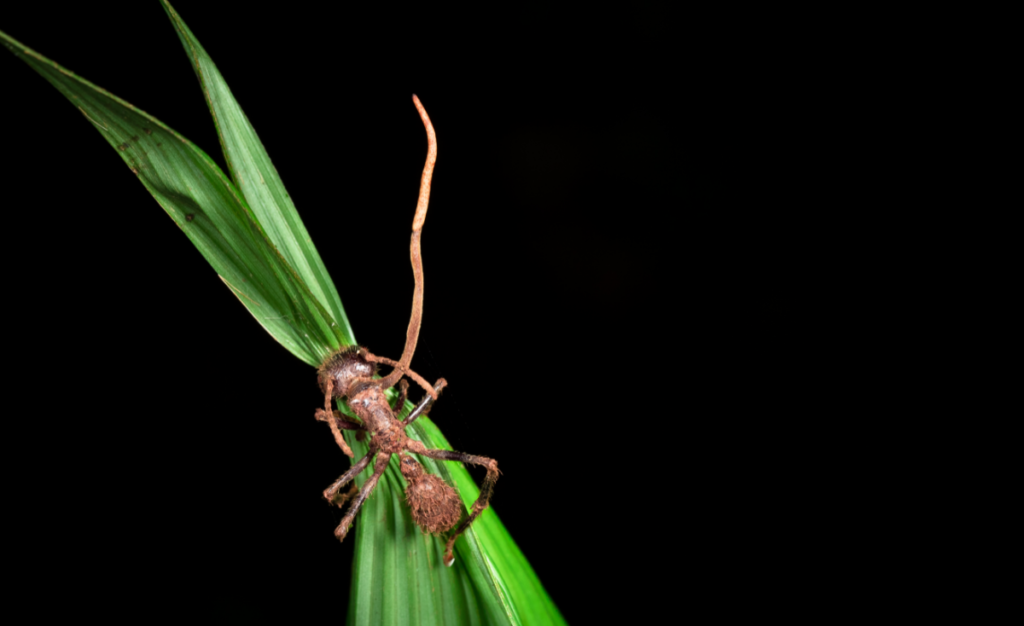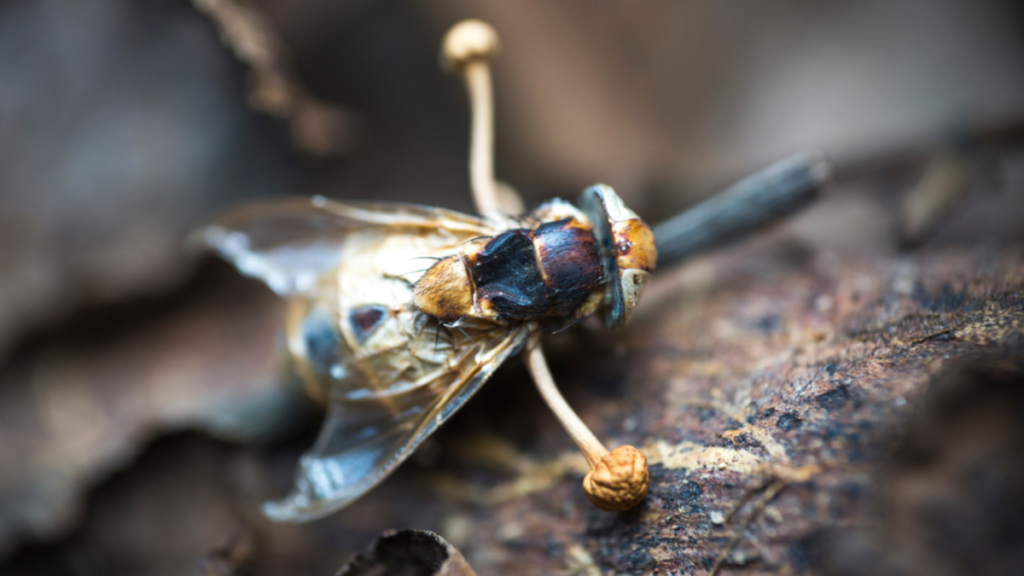Welcome back to the Lab!
I live for horror movies. So it should come as no surprise that October is my favorite time of year. This is the month that I get full control of the television in our home, relinquished only on Sundays to offer my husband a brief respite with a healthy dose of football. Since I began my foray into the horror genre, one theme has stayed consistent throughout my life, and that is my absolute, undying love for zombies (pun absolutely intended).
Zombies have their place in human lore; there several human diseases that present as “zombie-like,” but when it comes to the world of insects, they have us beat. Entomopathogenic fungi are fungi that attack insects and literally turn them into brainless, shuffling corpses, with the primary goal of infecting their kin.

There are several orders of entomopathic fungi, many of which have been exploited by humans as a means of pest control, but the most famous is probably Ophiocordyceps unilateralis. O. unilateralis made its debut in the public eye in an unforgettable episode of Planet Earth (2006), and a certain young Bug Wrangler has been fascinated since.
O. unilateralis will invade its preferred host, the ant species C. leonardi, by infiltrating the protective cuticle with an enzyme cocktail. Once the fungus has broken through the tough cuticular barrier, it will proliferate inside the ant’s body, until it eventually takes control the host’s central nervous system.

Once the fungus has full control of the host’s brain, it drives the ant upwards to a better vantage point. Once the ant is a sufficient height above the forest floor, it will compulsively latch onto a blade of grass with what is famously known as “the death grip.” Up until this point, if an infected ant is spotted by a member of the colony, it will be carried off into the jungle, far from the remaining colony members. But once the ant is in the throes of the “death grip,” there is no turning back.
Once the ant is securely latched in place, the fruiting body of the fungus will erupt from the ant’s head as the ant slowly dies while locked onto the plant. The fruiting body ruptures, dispersing spores in the immediate area, and subsequently infecting any other ants in the vicinity.

Entomopathogenic fungi are not unique to ants or even insects; they can attack many different types of invertebrates, from spiders to nematodes, and each species of fungi will typically specialize on a species of arthropod. These fungi have inspired scientists and horror nerds alike, and in my case, ignited a passion for both.
Until next time, thanks for visiting the lab!
Bug Wrangler Brenna
brenna@missoulabutterflyhouse.org
Want to revisit a previous Notes from the Lab issue? Check out our archive! Do you want to request a subject for an upcoming issue? Email me at the address above and put “Notes from the Lab” in the subject line.